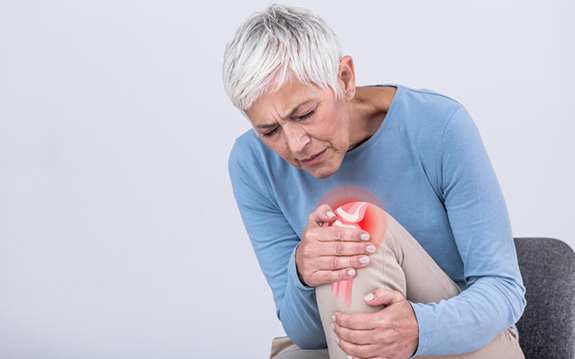Total joint replacement is a surgical procedure in which parts of an arthritic or damaged joint are removed and replaced with a metal, plastic, or ceramic device called a prosthesis. The prosthesis is designed to replicate the movement of a normal, healthy joint.
Hip and knee replacements are the most commonly performed joint replacements, but replacement surgery can be performed on other joints, as well, including the ankle, wrist, shoulder, and elbow.
When Is Total Joint Replacement Recommended?
Several conditions can cause joint pain and disability and lead patients to consider joint replacement surgery. In many cases, joint pain is caused by damage to the cartilage that lines the ends of the bones (articular cartilage)—either from arthritis, a fracture, or another condition.

If nonsurgical treatments like medications, physical therapy, and activity modifications do not relieve your pain and disability, your doctor may recommend total joint replacement.
What Happens During Arthroplasty?
You may have your surgery in an outpatient clinic or at a hospital. The technique your surgeon uses varies depending on the type of surgery and the joint you need to be replaced. Right before your procedure, you will receive anesthesia. This ensures you won’t feel pain during arthroplasty.
Your surgeon makes incisions (cuts) and removes the damaged joint. Then they replace it with an artificial joint. They use stitches, staples, or surgical glue to close the incisions. Your provider wraps the joint in a bandage. You may also need a brace or sling.
Surgeons can do some joint replacement procedures using minimally invasive techniques. These techniques use fewer incisions and special tools. The recovery time for minimally invasive procedures can be less than it is for traditional procedures. Your surgeon will recommend the most appropriate procedure for you.
What Happens After Arthroplasty?
Depending on the type of procedure you have, you may go home on the day of surgery, or you may need to stay in the hospital for a day or two. Talk to your provider about planning for recovery. You will need to have someone drive you home. You may also need help getting around or performing tasks like laundry or bathing.
After surgery, you will feel some pain. The first few days after your procedure, you should:
- Avoid physical activity Take time to rest as you recover from surgery. Your provider may recommend placing ice or a cold compress on the new joint for about 20 minutes at a time.
- Perform your physical therapy and home exercise program as prescribed. It is important to follow your provider’s instructions. They will not only help in your recovery to restore function but also help to protect the new joint.
- Elevate Depending on the joint you had replaced, your provider may recommend keeping the joint elevated while you rest. For example, if you had a knee replacement, rest with your foot on a stool or chair instead of the floor.
- Keep your incisions clean and covered
What Happens After Arthroplasty?
Depending on the type of procedure you have, you may go home on the day of surgery, or you may need to stay in the hospital for a day or two. Talk to your provider about planning for recovery. You will need to have someone drive you home. You may also need help getting around or performing tasks like laundry or bathing.
After surgery, you will feel some pain. The first few days after your procedure, you should:
- Avoid physical activity Take time to rest as you recover from surgery. Your provider may recommend placing ice or a cold compress on the new joint for about 20 minutes at a time.
- Perform your physical therapy and home exercise program as prescribed. It is important to follow your provider’s instructions. They will not only help in your recovery to restore function but also help to protect the new joint.
- Elevate Depending on the joint you had replaced, your provider may recommend keeping the joint elevated while you rest. For example, if you had a knee replacement, rest with your foot on a stool or chair instead of the floor.
- Keep your incisions clean and covered Follow your provider’s incision care instructions carefully. Ask your provider when you can remove the dressing, take a shower or bathe after your procedure.
- Take pain medication Your provider may recommend over-the-counter nonsteroidal anti-inflammatory drugs (NSAIDs) or prescription pain medication. Be sure to follow your provider’s instructions when taking pain medication. You may also need drugs to reduce swelling or prevent blood clots.
